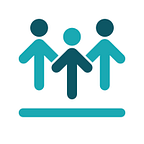Using Eureka or EngageNY This Fall?
Here are some resources that might help!
Several years ago, Gem Innovation Schools adopted a digital K-5 math curriculum (built on Eureka Math resources) to more readily facilitate a station rotation instructional model. But just when they felt they’d unlocked the program’s potential — COVID-19 hit.
The Gem Innovation Schools team — already a pioneer in virtual learning — quickly pivoted to 100% remote instruction, applying previous lessons learned to this new context and uncovering some new ones. At the end of the 19–20 school year, nearly all students finished the year’s worth of digital lessons (even more than the previous year pre-pandemic).
Here’s how Gem maximized its K-5 digital math curriculum for staff, students, and families — and curated an easy-to-use suite of resources that any educator using Eureka Math or Engage NY can leverage.
1. They reorganized online resources to make them more efficient to use remotely.
As all teachers learned this spring, the internet’s world of teaching resources is huge. There is a huge body of aligned, rigorous curriculum resources — and can be overwhelming to navigate.
In an effort to streamline how students, teachers, and families engage with its digital math curriculum, Gem’s team curated and organized these open-source resources into an easy-to-use master spreadsheet by grade level.
Here’s what they did:
- Leveraged existing resources for teacher prep. To facilitate teachers’ intellectual prep, Gem Innovation Schools curated exemplar videos for each lesson and organized them into easy-to-find links by lesson.
- Aggregated materials for additional student practice. Gem Innovation Schools linked rigorous sample problems from EngageNY, and Eureka for teachers, who can easily share them with students and families when a student or group of students need a little extra practice. ASSISTments allows teachers to assign independent practice from Eureka/EngageNY (as well as other open educational resources) online, so that students get immediate feedback and teachers get actionable data
- Translated assignments to Google Slides. All PDF assignments were converted into editable Google Slides. Teachers simply assign a student a copy of an assignment and students edit by adding numbers, drawings, or words to complete their work. Here’s a tutorial.
Gem Innovation Schools has open-sourced these curated K-5 digital math resources, including lessons, teacher videos, problem sets, and homework. These can be used by anyone using Eureka or EngageNY.
If you would like to access these resources for free, please fill out this brief form and you will receive instructions on how to download.
2. They are thoughtful about how teachers engage and motivate students — even harder to do when using a digital curriculum.
Gem Innovation Schools’ math block consists of:
- 20 minute spiraled review warm-up (teacher-led)
- 30 minute rotations, including a digital lesson (independent) and a small group Eureka lesson (teacher-led)
They’ve maintained this structure even while remote as teachers lead the spiraled review synchronously and then break out for the small group lesson.
Here are other lessons Gem Innovation Schools learned to make its digital curriculum work:
- Manage teacher talk. Teachers set timers for the 20-minute math block to remind them when to move on. In previous years, this was where teachers lost the most amount of time as they tried to reteach everything during this block rather than just reviewing quickly and then moving on.
- Prep Nearpod lessons for each day. Teachers record their lessons and release Nearpods for self-paced instruction. Additionally, students can join another teacher’s session if the timing doesn’t work. Teachers also can share their Nearpod lessons across schools.
- Keep kids on pace with digital lessons (and monitor weekly). Gem Innovation Schools’ leaders noticed that once students fell behind in the digital lessons, they lost motivation and struggled to get caught up. Enter: Math Academy . Any student who is behind (based on a previously created pacing guide) is invited to a Wednesday “Math Academy” where they have the space and support to catch up on missing lessons. These operated as a “pressure relief valve for students,” shared Gem’s CAO Laurie Wolfe.
- Celebrate the heck out of kids. It can be tough to keep kids motivated by digital lessons — especially when remote. Wolfe shared, “We make a big deal out of kids who complete their four digital lessons every week. Teachers visually track kids’ completion on a weekly basis and kids find that hugely motivating.” Kids also are motivated to complete their lessons each week to avoid Math Academy on Wednesdays.
- Leverage existing intervention/recovery resources. Gem previously designed their own “foundational skills” lessons for teachers to use with students with skill gaps. Expecting larger gaps and less time to spare this fall, Wolfe stressed the importance of existing resources — like Achieve the Core’s Prioritized Instructional Content and TNTP’s Learning Acceleration Guidance — to support kids efficiently.
With the quick pivot to remote and hybrid instruction this fall, we expect even more smart lessons learned about how to leverage individualized digital curricula to support students remotely. We’ll continue to share more resources from Gem Innovation Schools and other great public charter schools.
Here’s more about how other great public charter schools are pivoting during remote learning on Charter School Growth Fund’s COVID-19 resource page.
